If you are able to play chord backup on the fiddle and violin, you will be a more versatile and well-rounded musician. Firstly, most fiddle players just play the melody. The chord backup skill allows you to contribute supporting parts when playing with groups, which means you’ll be a lot more useful in a band.
Secondly, knowing chords will help you with taking solos because you’ll be able to better hear the chord changes. This is because you’ve already practiced them on your own.
Finally, it will help you develop an ear for how to add double stops to fiddle tunes.
What is a chord?
A chord is two or more notes played at the same time. In most music, chords support the melody.
You can play six notes at the same time on guitar, but really only two notes on the fiddle. This is good because the chords are easy to learn and remember. It’s also challenging because a two-note chord can have a major or minor version. I get more into that in the FiddleHed course. In this lesson, I just want to get you up and running…
Open String Fiddle Chords
We’ll start by playing simple open string double stops. Though you play two strings at once, it does not require more energy or press. Rather, you want the bow angle to be perfectly balanced between the two strings. Let’s start by practicing some string changing on D and A strings:
D0-0-A0-0
As you practice this simple exercise, pay attention to the angle your right arm is at for each string. Next step is to play on the D string and slowly angle the bow towards the A string until you are playing both strings. It might be hard to get it balanced evenly at first.
This is a D Major chord (D0A0).
D0A0
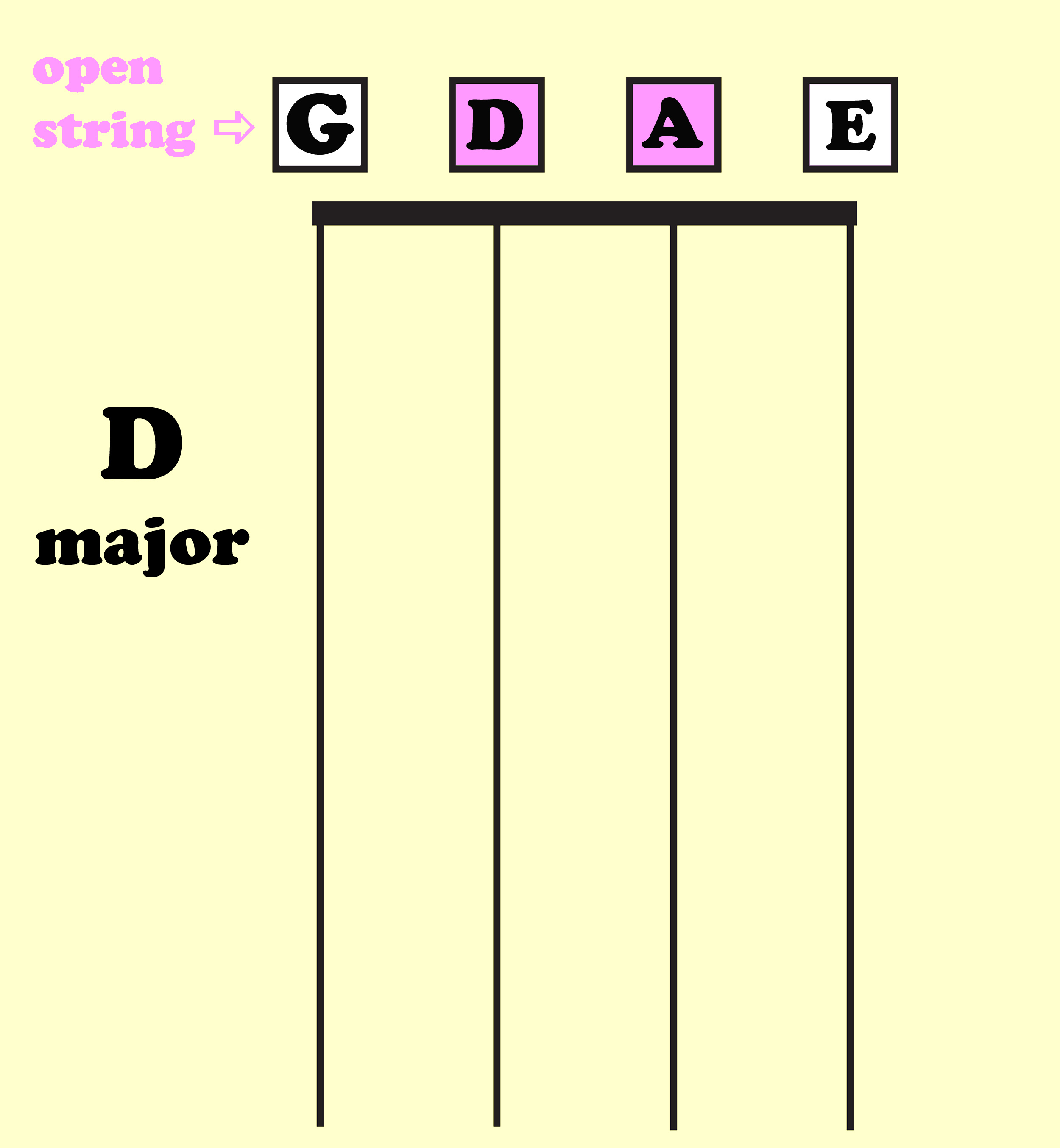
Single Stop / Double Stop Alternation
Here’s a great exercise. Alternate between single bows and double bows:
D0-0-A0-0 | D0A0-D0A0-D0A0-D0A0

Pay attention to the three angles of the bow of open D string, the DA double stops, and for open A.
Once you can do that, you can do G Major:
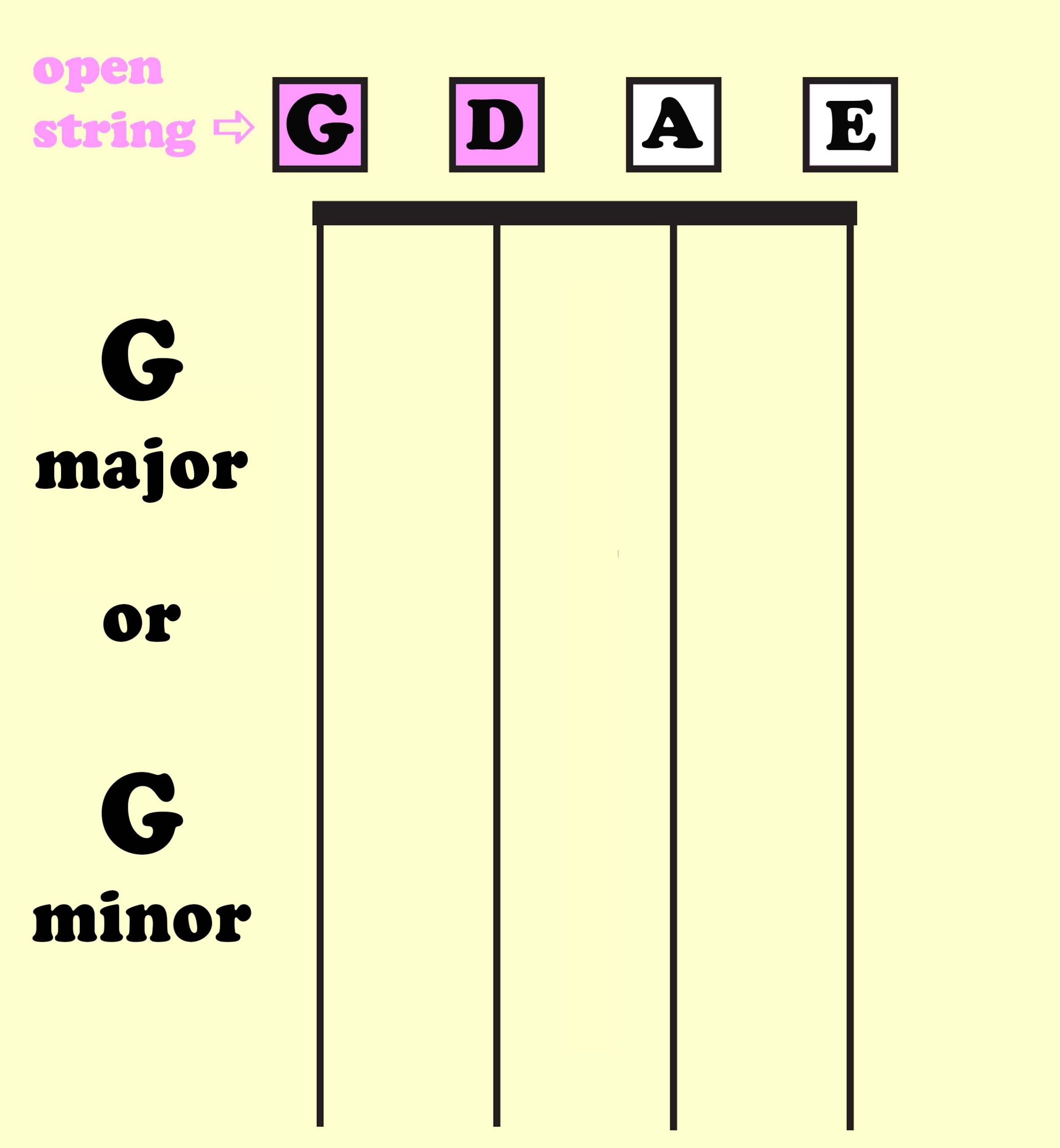
and A Major:
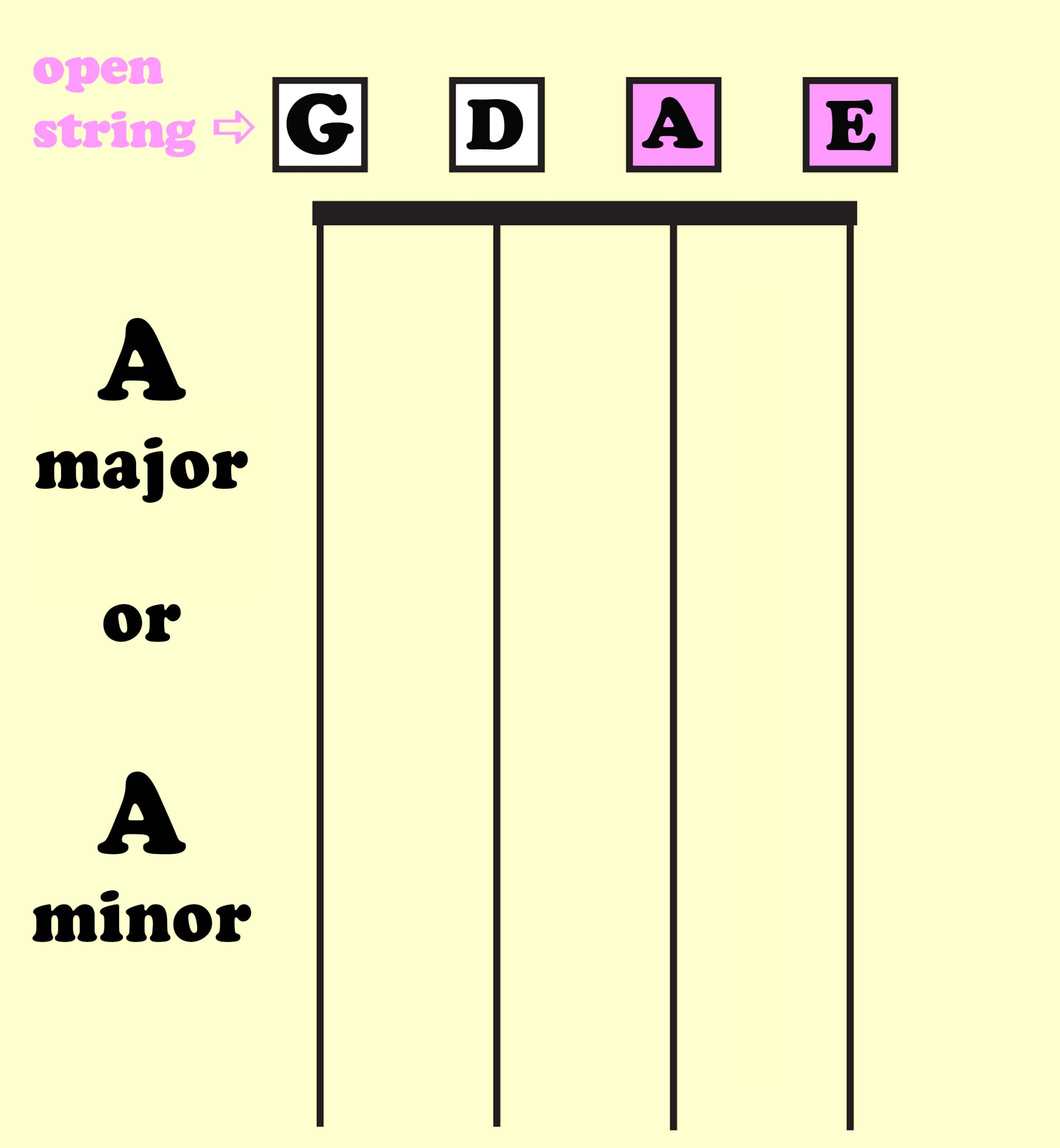
Fiddle Chord progressions
You can string two or more together chords together to make a chord progression. Chord progressions are the building blocks of songs. Here’s a progression called the I-IV-V (one, four five)
D/ G/ A/ A
Try to play it on your own using the open string chords you just learned.
Fingered Fiddle Chords
Once you can play an open string chord progression, then you can learn fingered chords. This will ultimately make for a smoother sound on backup. It also prepares you to add double stops to tunes.
Instead of open string A string, play it like this:
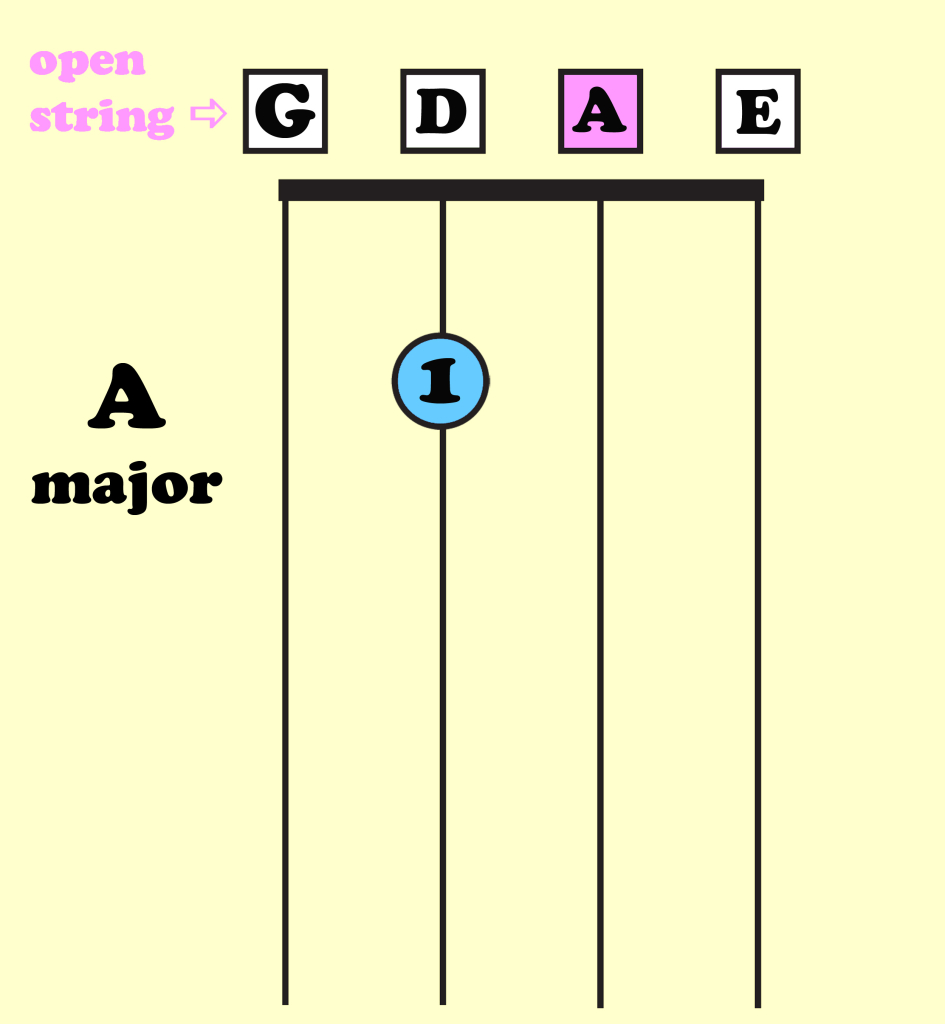
Learn more about this shape in this lesson from the course.
Instead of open string A string, play it like this:
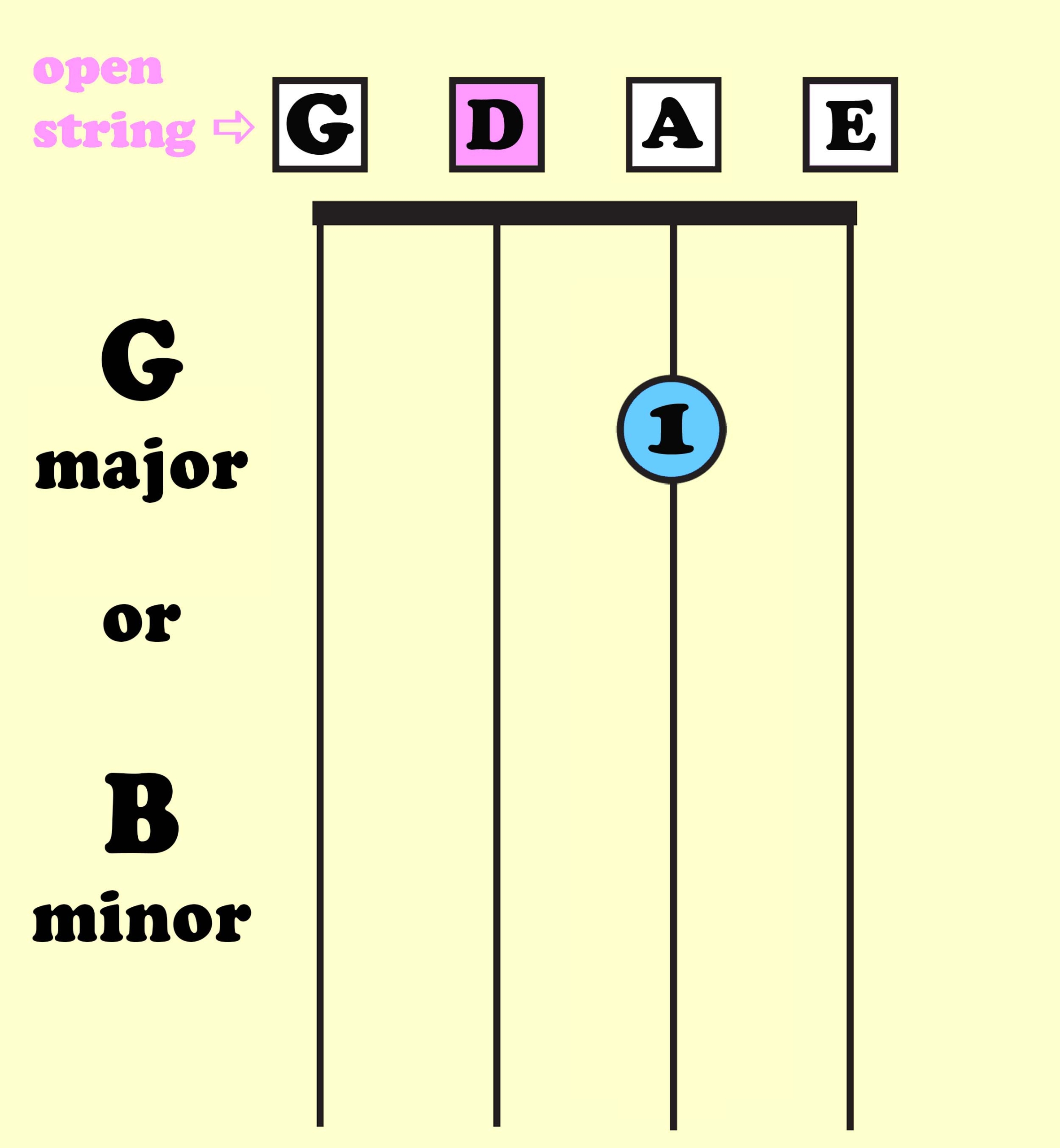
Learn more about this shape in this lesson from the course.
Now play the full progression but use fingered chords for G and A major:
D/ G/ A/ A
Chord Strategy
The best way to start learning chord backup is to master three chords (D, G, A) and then play LOTS of songs. Try to learn 20 songs with these three chords. Focus on learning it physically before you even begin to think about theory. I talk more about it in this video:
Fiddle Chords open up new possibilities
In conclusion, you can fulfill another role besides just playing the melody. Learn and practice chords so that you can backup singers and other lead instruments. Your knowledge of chords will help you make your fiddling more sound more like fiddling when you add double stops to melodies. Finally, hearing the chord patterns will help you to improvise.
Two ways I can help you level up your fiddling
- Sign up for the FiddleHed newsletter below.
- Sign up for the Free Two-week Trial. You’ll get full access to all courses and group lessons. Plus, I’ll send you some free lessons tailored to your current skill level.
Further learning
- When playing backup fiddle, what’s the best rhythm for the chords?
- Playing Fiddle Backup On Girls Just Want To Have Fun
For subscribers:
Return to the Fiddlosophy Blog >>


reviewing chords 1. v helpful. chris I